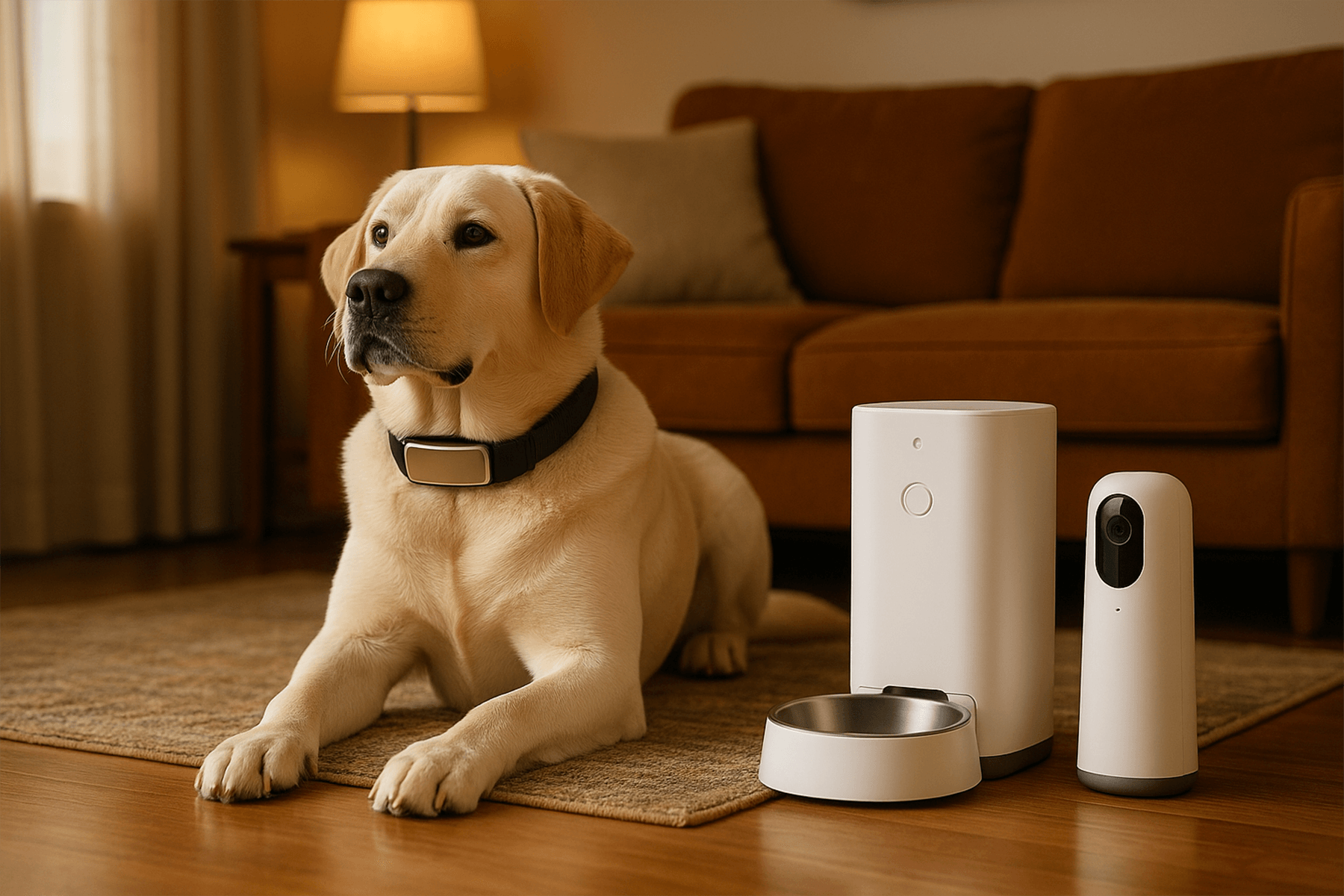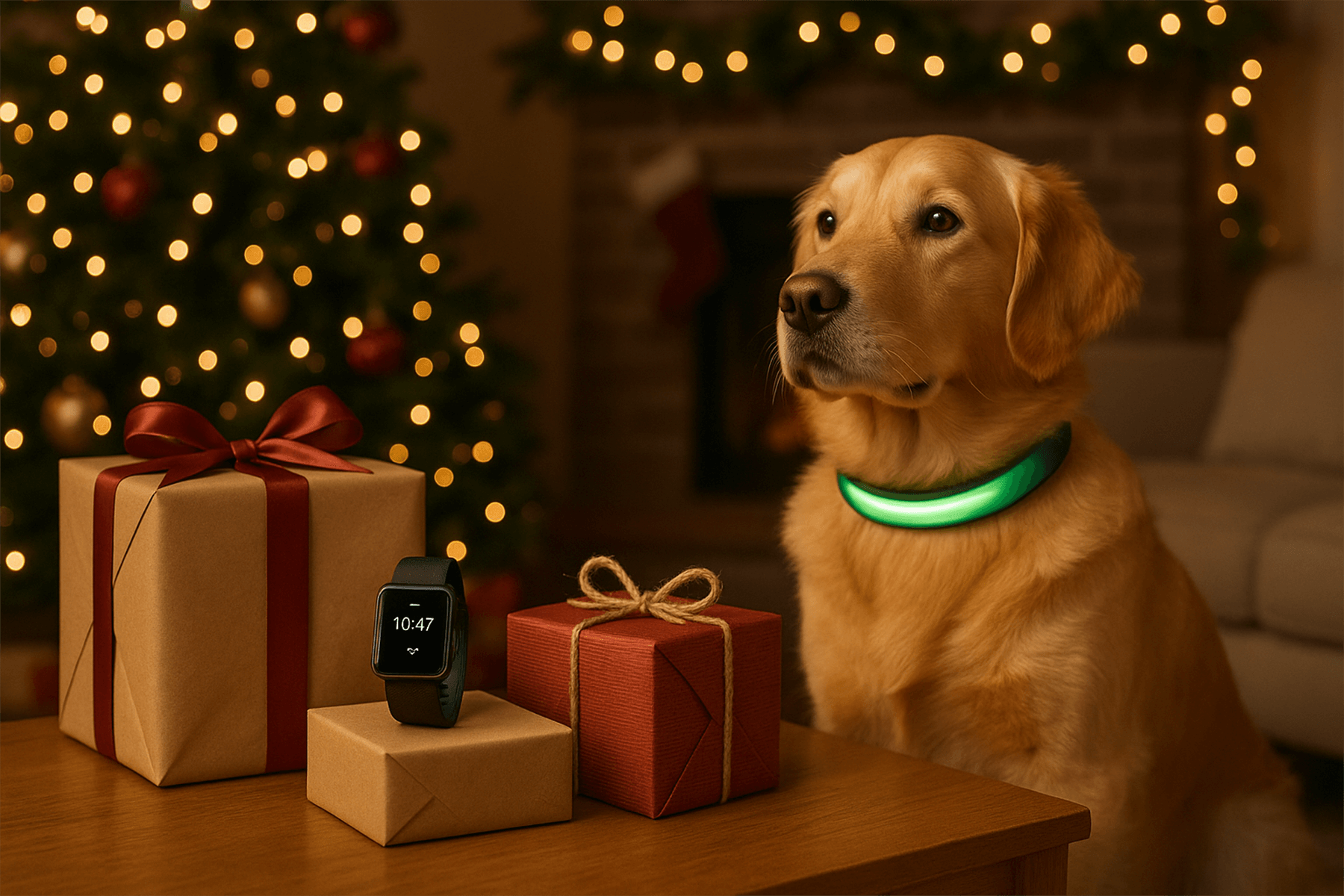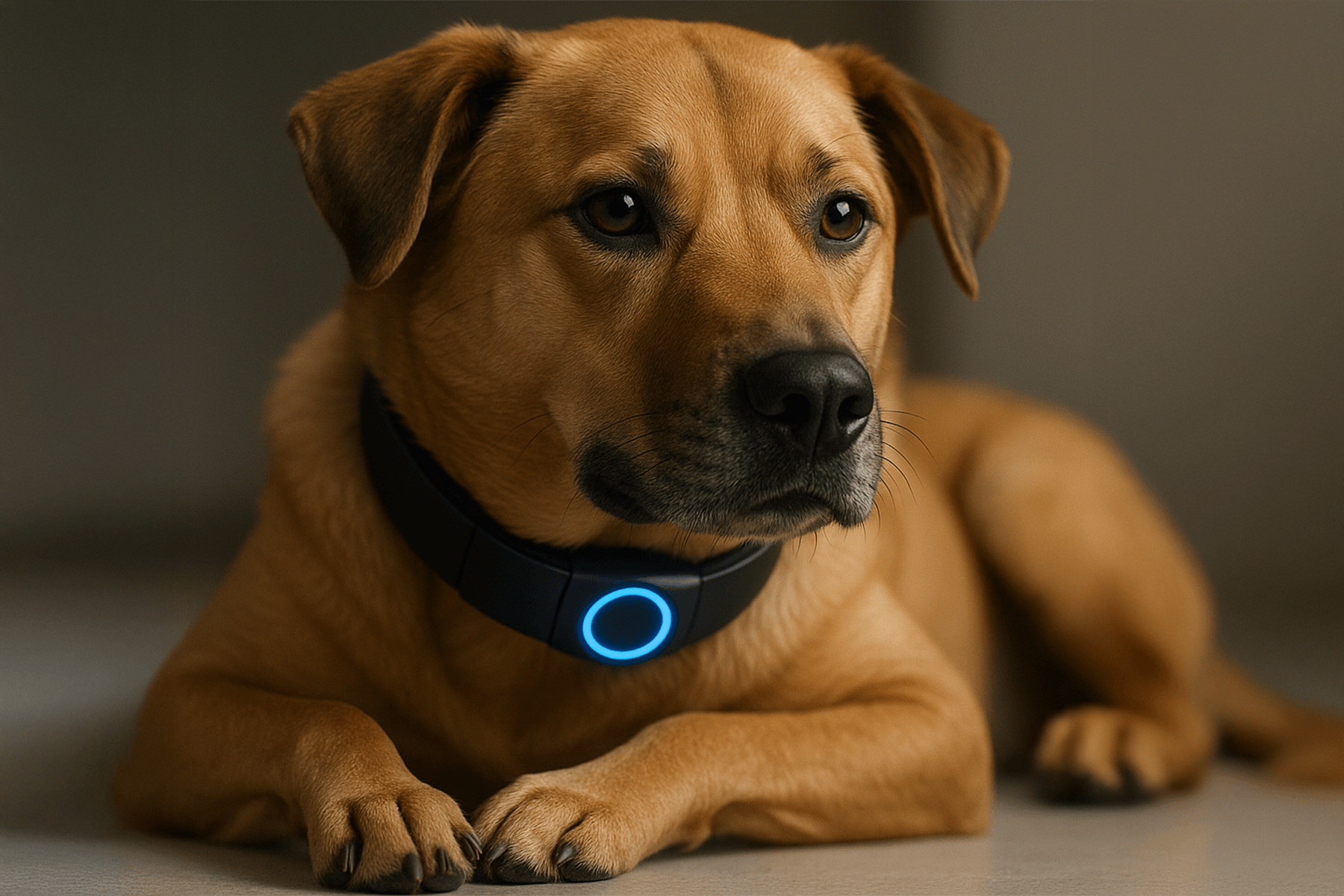The idea of a “smart home” is expanding beyond humans. Today’s connected homes now include pets—complete with feeders that portion meals automatically, cameras that analyze behavior, and collars that track health. Together, these devices form the beginnings of a smart pet home ecosystem, powered by AI and the Internet of Things (IoT). For pet owners, it means continuous insight and reassurance that companions are healthy, comfortable, and cared for, even when no one is home.
How AI and IoT Are Building the Smart Pet Home
AI and IoT are turning isolated gadgets into an intelligent network of care. Smart collars collect real-time data on movement, rest, and even vital signs. Cameras recognize behavior patterns, while automated feeders and smart doors sync with these inputs to adjust feeding times or manage access. The result is a responsive environment that anticipates a pet’s needs.
In this ecosystem, each device plays a role. A collar tracks daily activity and sends data to an app. The feeder uses that data to prevent overfeeding. The camera flags changes in movement or mood, alerting owners if something seems off. As more devices integrate, these connections begin to form a full portrait of a pet’s life—something traditional monitoring could never achieve.
Examples of Smart Pet Devices in 2025
Several companies are shaping what the next generation of smart pet homes looks like:
- Tractive integrates GPS tracking and health scoring, allowing owners to follow movement and well-being in real time.
- Petlibro produces smart feeders and fountains that can be automated through mobile apps or synced with collar data.
Collectively, these tools form a connected web of care—each device sharing insights with the next. According to Global Market Insights, the global pet tech market is projected to surpass $41.3 billion by 2032, driven by AI and IoT adoption across home and veterinary settings.
Why Pet Owners Are Embracing the Smart Pet Home
Modern life makes it harder to monitor pets continuously, especially when owners work or travel. AI-enabled devices now fill that gap. A camera can detect when a dog becomes restless, while a smart feeder ensures consistent nutrition. Combined with collar data, these tools offer daily peace of mind and help identify changes in health before they escalate.
For many owners, the payoff is early intervention and stronger bonds. Seeing data on play, sleep, and stress helps people adjust exercise, comfort, and environment proactively. When integrated with veterinary advice, these insights can improve outcomes and reduce emergency visits.
What to Consider Before Building Your Smart Pet Ecosystem
- Features: Choose devices that deliver clear insights rather than novelty. Behavior tracking and health summaries matter most.
- Compatibility: Verify that devices sync with your smart home system (e.g., Alexa, Google Home, Apple HomeKit).
- Battery and durability: Look for waterproof and long-lasting gear suitable for daily play.
- Data security: Check how your pet’s information is stored and shared; prefer brands with transparent privacy policies.
- Subscription model: Some AI analytics require ongoing plans—read what’s included before you buy.
Challenges and Future Outlook
Like all connected tech, smart pet devices face hurdles: spotty connectivity, short battery life, and inconsistent interoperability. Over-reliance on AI interpretations can also lead to false alerts. Still, innovation continues. Future devices may track temperature, stress hormones, or even emotional cues. As these systems mature, veterinarians may receive direct health data streams from homes, redefining preventive pet care.
Key Takeaways
- AI and IoT are transforming pet ownership into a data-informed experience.
- Smart collars, feeders, and cameras now communicate to create responsive pet ecosystems.
- Owners gain convenience, confidence, and earlier insights into pet wellness.
What This Means for You
For pet owners, the smart pet home is more than convenience—it’s a bridge between affection and insight. Integrating AI devices into your household brings care into real time, reducing uncertainty and strengthening the connection between you and your companion.
FAQ
- Do smart pet devices replace veterinarian visits?
No. These tools offer helpful trend data but are not diagnostic. They support, not substitute, professional medical care. - Can I connect pet devices to my existing smart home?
Yes. Many devices work with Alexa, Google Home, or Apple HomeKit, allowing seamless voice or app control. - Are smart collars safe for pets?
Most are lightweight and designed for comfort. Always check fit and monitor for irritation, especially in active pets. - What happens if Wi-Fi or battery fails?
Most devices cache data locally until connection restores, but regular charging and Wi-Fi checks prevent data gaps. - Is my pet’s data secure?
Choose brands with clear privacy policies and encryption. Avoid unknown third-party apps that collect excessive data. - Do these systems work for cats as well as dogs?
Yes. While many devices are dog-focused, new models support feline behaviors like sleep and litter tracking. - Can smart pet homes help anxious pets?
Yes. Cameras and interactive toys let owners engage remotely, easing separation anxiety and promoting calm routines. - How expensive is it to build a smart pet ecosystem?
Expect $200–$500 for a starter setup with feeder, collar, and camera, plus optional subscriptions for analytics. - Will AI misinterpret my pet’s behavior?
Occasionally. Algorithms are improving but can confuse play with restlessness. Combine data with personal observation. - What’s next for AI in pet care?
Upcoming innovations include emotion detection, biometric sensors, and predictive analytics to prevent illness earlier.



